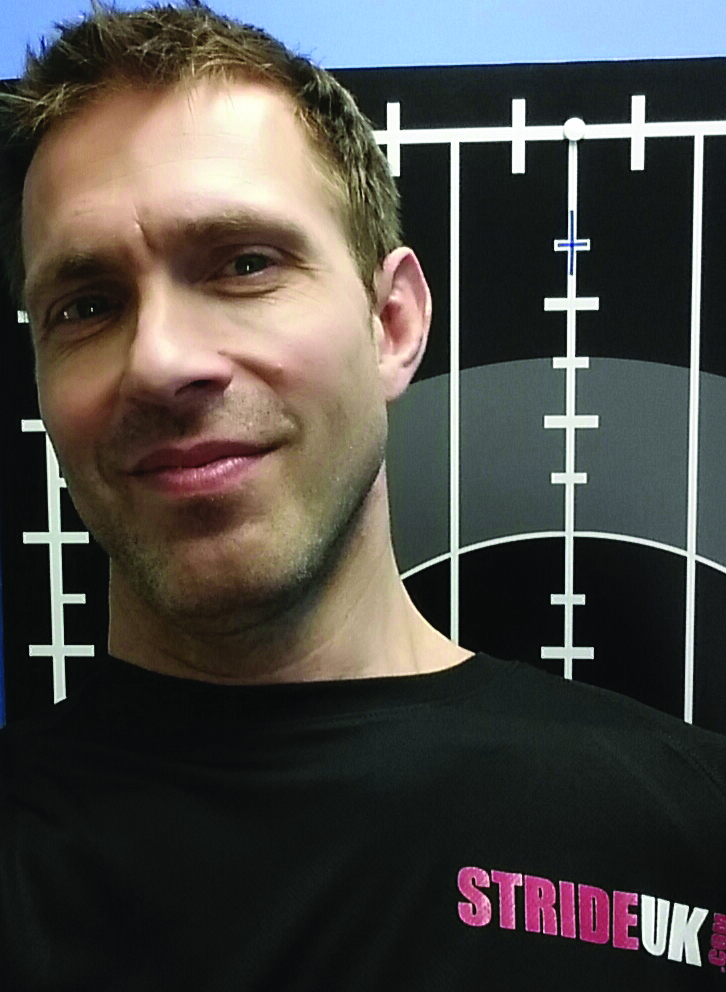Ask any runner about running form and expect a different answer. The topic of running technique brings up countless questions:
- Should I land on my midfoot or forefoot?
- Is a heel strike really that bad?
- Should ALL runners change their running form?
- Do I “run tall” or lean forward?
- Is a short stride better than a long stride?
- What are the best form cues?
I could go on and on. But when it comes to running form, I think it’s best to turn to the experts.
These are the pros who work in formal gait analysis labs, have PhD’s in physical therapy, and have worked with countless runners as sports medicine physicians.
And today, I’m excited to bring you their thoughts on two critical questions:
Question #1: Should runners actively change their running form? Why or why not?
Question #2: What 1-2 form fixes or cues would be most helpful for the majority of runners, and why are they beneficial?
Below you’ll find the answers to both questions by each coach, doctor, or running form analyst. I encourage you to follow their work as they’re leaders in the running industry.
Peter Larson, PhD: “There’s risk involved…”
Pete Larson is a running coach and gait analyst at Performance Health Spine and Sport Therapy in Concord, NH. He writes about running at www.runblogger.com and is the co-author of Tread Lightly.
 He also contributed his expertise on foot strike and cadence to the Improve Running Form course.
He also contributed his expertise on foot strike and cadence to the Improve Running Form course.
1. Should you change your running form?
If a runner has a nagging injury and a form analysis reveals issues that might be contributing to it, I would say yes, definitely. If a runner has been injury free for a long time and is getting what they want from the sport in terms of enjoyment and performance, I’d say it’s probably best not to mess too much with what is working.
Form changes can create problems that didn’t previously exist, so there is some risk involved and you need to weigh the costs versus the potential benefits.
2. What 1-2 form fixes or cues are most helpful for most runners?
I think over-striding and hip instability and/or weakness leading to excessive hip adduction are the issues I see most frequently. Aiming to contact the ground with a roughly vertical shin or maintaining a cadence of 170-190 or so can help with the former, and this in turn can potentially reduce stress to the knee and hip.
Hip drop and excessive adduction have been linked to things like ITBS and patellofemoral pain syndrome, so if you have a history of either injury it’s worth having your form looked at. Working on hip abductor strength (gluteus medius) or cueing to keep some space between the knees can help here.
Dr. Richard Hansen: “As you gain fitness, efficiency naturally improves…”
Dr. Richard Hansen, DC, DACBSP, CSCS works with runners of all abilities, currently coaching youth, high school, and post-collegiate athletes as part of a USATF club called Roots Running Project.
In his private practice, he works with all levels and abilities of runners and has had the opportunity to work with over 20 athletes (nationally and internationally) who have been members of Olympic, World Championship, or Pan American teams.
Dr. Hansen combined his answers since his is a nuanced take on the subject:
I’m usually not a big proponent on trying to actively change running form while the person is in the process of running. The exception would be the more experienced or elite runner who is trying to fine tune their running economy from a performance side.
Occasionally I might give a cue like relax your shoulders if it looks like the runner is tensing or “stay up tall” when someone is trying to sprint or run uphill. But this is usually reserved for the more experienced runner during a race.
The reason why I don’t like the idea of changing running form is I think people can easily over-compensate too far in the opposite direction (e.g., going too much into striking their forefoot when attempting to run more mid-foot). I prefer to use gait analysis as a means to dictate what strength or ancillary work should be performed to make the runner’s structure work more efficiently.
The goal of strength training for runners should be to support their structure. So if you notice someone is significantly arching their back when running, focus on core control and hip flexor flexibility during their ancillary routines. Not to mention there are so many anatomical variants, that to fit everybody into one mold as to what an ideal running form looks like is nearly impossible.
For example, someone with slight femoral head anteversion may give the appearance that they are running with their toes slightly turned in. So to cue them to turn their foot out would be inappropriate as they are limited by what their structural range of motion allows.
Form also changes with running speed and fitness, so to cue someone to changing their form at 9 min/mile pace may not translate to what they do when they are running 7min/mile pace. Utilizing aspects of running that improve running mechanics at faster speeds can help improve overall efficiency, like hill sprints or speed development strides.
In the end, I would much rather a runner be relaxed with their stride rather than focusing on trying to footstrike at a certain point and move their hips in a specific way. As they gain fitness, their efficiency will naturally improve, especially if they are utilizing ancillary work to support their mechanics.
Dr. Kari Brown Budde: “All runners should not have the same running form…”
Dr. Kari Brown Budde is the owner of Endurance Athletes Physical Therapy and Sports Performance. She completed a post-doctoral sports physical therapy residency program in 2009 and is a board certified specialist in sports physical therapy, a U.S. Track and Field coach and sees athletes online at www.RefinedRun.com.
She has also been published in the International Journal of Sports Physical Therapy, authored textbook chapters, home study courses, and numerous articles for local and national running and injury publications.
Dr. Brown Budde is currently Vice Chair of the Running Special Interest Group of the Sports Physical Therapy Section.
1. Should runners change their form?
It depends. Every runner is different – with different amounts of strength, mobility, endurance, goals and history of training and injury (or lack thereof). One thing I want to stress here is that all runners should not have the same form – we shouldn’t modify everyone’s gait to be identical. How you move is unique.
However, we can improve your individual running gait to be the most efficient, have the best longevity and be effective for you. Reasons to change running form include preventing injury, improving performance, improving efficiency and decreasing stress to painful areas to continue running without taking time off.
Once I perform a video running gait analysis and functional examination of a runner (and after examining their training history, health history and goals) I can see exactly what has been causing their pain or inefficiencies. After picking apart every movement of their running form during every moment of the gait cycle, I will have a great picture of what needs to be done first, and if at all.
There are three main types of runners when we are talking about running form:
- Runners that need running form or gait changes, but their body isn’t ready to support those changes. For example, some runners are lacking essential mobility (motion of a joint) in specific joints that won’t allow them to use their muscles appropriately – this makes any type of form modification impossible. Once mobility issues are taken care of through proper treatment, then they will benefit from changing their running form.
- Runners that have great, efficient gait patterns that do not need form modification or gait retraining. I have not seen many of these – even at the elite level.
- Runners that need running form or gait changes and their body can handle it. This group is the most fun – we can get started with gait retraining right away!
2. What 1-2 form fixes or cues are most helpful for most runners?
The most common form problem that runners have is poor hip motion and/or power. My favorite go-to cue to improve running gait for these runners: “Glute Run” – squeeze each butt cheek muscle when that leg is pushing off. My clients would all tell you that I am a stickler for using those glutes!
Dr. Nick Campitelli: “Shoes change how someone runs…”
Dr. Campitelli is a podiatrist in Akron, OH specializing in foot and ankle surgery with an interest for running as well as helping runners with injuries. For the past several years he has been treating running injuries in patients by fixing their form and transitioning them to minimalist shoes.
Having treated runners with all types of injuries through conservative measures with orthotics and shoe gear changes to reconstructive foot and ankle surgery, Dr. Campitelli has brought what works best and is most current to his practice as well as the Akron and Cleveland running communities.
Learn more about form, injuries, and running shoes at Dr. Nick’s Running Blog.
1. Should runners change their form?
The question that comes up a lot is: “Is there a proper form that one should strive towards or what is ‘proper form’?” I like to term it “natural form.” My opinion is that everyone has a natural running form and they need to find it in order to improve their running and minimize their risk of injury or overuse.
One factor that inhibits obtaining a natural form is shoes. Shoes can change the way someone runs which can interfere with them obtaining natural form. By trying to run without shoes, you will gradually adopt a more natural form which is natural to you and may not be “proper” because natural could vary from one individual to the next.
By changing to a more natural form you can become more efficient in your running but even more importantly you will reduce your risk of becoming injured.
With that said, injuries are more commonly caused by improper training patterns but adapting a natural stride can certainly help make running easier and improve your ability to run easy.
2. What 1-2 form fixes or cues are most helpful for most runners?
The factors that I typically look to fix in runners are:
- Adapting to a forefoot or mid-foot strike pattern.
- Increasing your cadence to a foot strike of 180 steps per minute or greater
- A gradual forward lean allowing gravity to almost pull you forward as if you are falling
Dr. Jordan Metzl: “Shorten your stride, quicken your cadence…”
Dr. Jordan Metzl is “the athlete’s doctor,” with a practice of over 20,000 in New York and Connecticut. He completed his residency training at Tufts Medical Center in Boston and Sports Medicine Fellowship Training programs at both Vanderbilt University and at Harvard Medical School.
Dr. Metzl appears regularly on media programs including the Today Show, National Public Radio (NPR) and the New York Times. He is also author of the bestselling books The Exercise Cure and Athlete’s Book of Home Remedies, as well as the creator of the Iron Strength workout.
1. Should runners change their form?
Runners should NOT change their form just to do it – if they’re not having aches/pains or injury leave your form well enough alone. I’d think about changing it up if you’re getting hurt is running isn’t super comfy.
The easiest and most effective alteration is shortening your stride and quickening your cadence. This allows for a more midfoot strike without thinking about it; it really works!
2. What 1-2 form fixes or cues are most helpful for most runners?
Form fixes in addition to the one mentioned above — the best is to build total body strength. The stronger the kinetic chain, the less the loading force on any particular part of the chain. A strong kinetic chain makes the ground reactive force (GRF) lower and makes running much more comfortable.
The other cue is to encourage runners to try and keep their feet underneath themselves as they land. This diminishes “bounce” and lessens injury risk as well.
Matt Phillips: “A change in form can be a very useful tool…”
Matt Phillips is a running injury specialist and gait analyst from the UK. Originally a strength & conditioning coach, Matt turned his attention to the study of running related injuries in 2004 and today works with a team of sports therapists, physiotherapists, osteopaths, podiatrists and massage therapists.
A regular presenter at UK therapy conferences and training seminars, Matt is the in-house running injury specialist for UK magazine Running Fitness. You can visit his website at www.sportinjurymatt.co.uk.
Matt’s expertise on running technique was tapped for the Improve Running Form course, which helps runners identify their biomechanical flaws and learn proper form.
1. Should runners change their form?
In order to answer this question, I would say it is useful to first define what our goal is behind encouraging a runner to actively change their running form.
If the goal is to reduce or eliminate current pain, research supports the theory that by actively modifying running form we can offload tissues which are currently under too much stress, desensitize the system and eliminate the original pain.
Research also shows that by using internal and external feedback, conscious attempts to modify form can eventually become unconscious over time. Whether the running form modification needs to stay there forever is another matter, but it does seem that an active change in running form can be a useful tool in treating a runner in pain.
If there is no pain issue and the goal is to simply improve running performance, the research is not clear. We know there is not one optimum way to run; if there were then all the elites would run in exactly the same way and we can clearly see that is not the case. However, there are certain traits common to the most successful running forms we do see so there does seem to be a direction to move in in the pursuit of excellence.
We must take into account that as individuals we all have a unique makeup thanks to the natural human variance in physiology, psychology, personal history, etc. Tweaking running form is very much an ongoing project to see what works and what doesn’t. The moment we start defining changes by what it says in a text book and lose perception of the actual runner in front of us, the quicker we stray from making the right changes to help the runner in front of us find their optimum running form.
Finally, making active changes to running form based on identification of ‘biomechanical flaws’ is an area that can be full of red herrings. Screening protocols often fail to replicate the demands of running and can highlight ‘flaws’ that bear no significance to our runner. Interpreting ‘flaws’ as the reason a runner is in pain can be a slippery road too as the research often contradicts itself, meaning we find correlation but not causation.
2. What 1-2 form fixes or cues are most helpful for most runners?
I always find it dangerous to name any fix or cue that will help the majority of runners as it really depends on the runner in front of us. However, if we allow some generalization I would offer the following two as I see them applicable in many cases:
- Increase Cadence
Running is a global activity. Although we split the gait cycle into different stages and phases for discussion, I find the best cues to modify running form tend to be the most global in nature, i.e,. avoiding the temptation to focus on one body part or stage of the gait cycle.
Whatever the goal, having a runner increase their cadence via short interval drills at a cadence 5-10% higher than their current cadence can be an easy way to achieve a change in running form over a relatively short period of time. Many of the specific outcomes I am looking for (decrease overstride, increased stiffness) can be achieved by creating a program involving cadence increase. (Note: the goal is never to always run at a magic number like 180spm. This is a myth.)
- Run Quieter
This is such a simple, global drill with so many potential benefits but one that many runners fail to employ. I find so many runners with earphones are totally unaware of the noise they are making on each landing. If they are suffering from issues that could be linked with impact, it makes sense that the obvious first thing to do is try and land a little softer.
Drills in which the runner tries to run quieter for 30 seconds and/or imagines they are running on hot tiles can be a great way to achieve modification in running form over time. I often link it to the aforementioned cadence training.
How to Improve YOUR Running Form
Running technique is a complex and often frustrating topic to discuss because there are often countless shades of grey that must be considered. It’s something that I almost always refer back to the experts on because it’s not a subject most beginners – or even advanced runners – are capable of navigating.
There’s tremendous insight that you can learn from the experts who graciously contributed their advice to this article. Please acknowledge and thank them for their expertise!
Now it’s your turn:
Download our free Form Cues Cheat Sheet for coach Jason Fitzgerald’s favorite cues, when to implement them, and how to use them to improve your running technique.